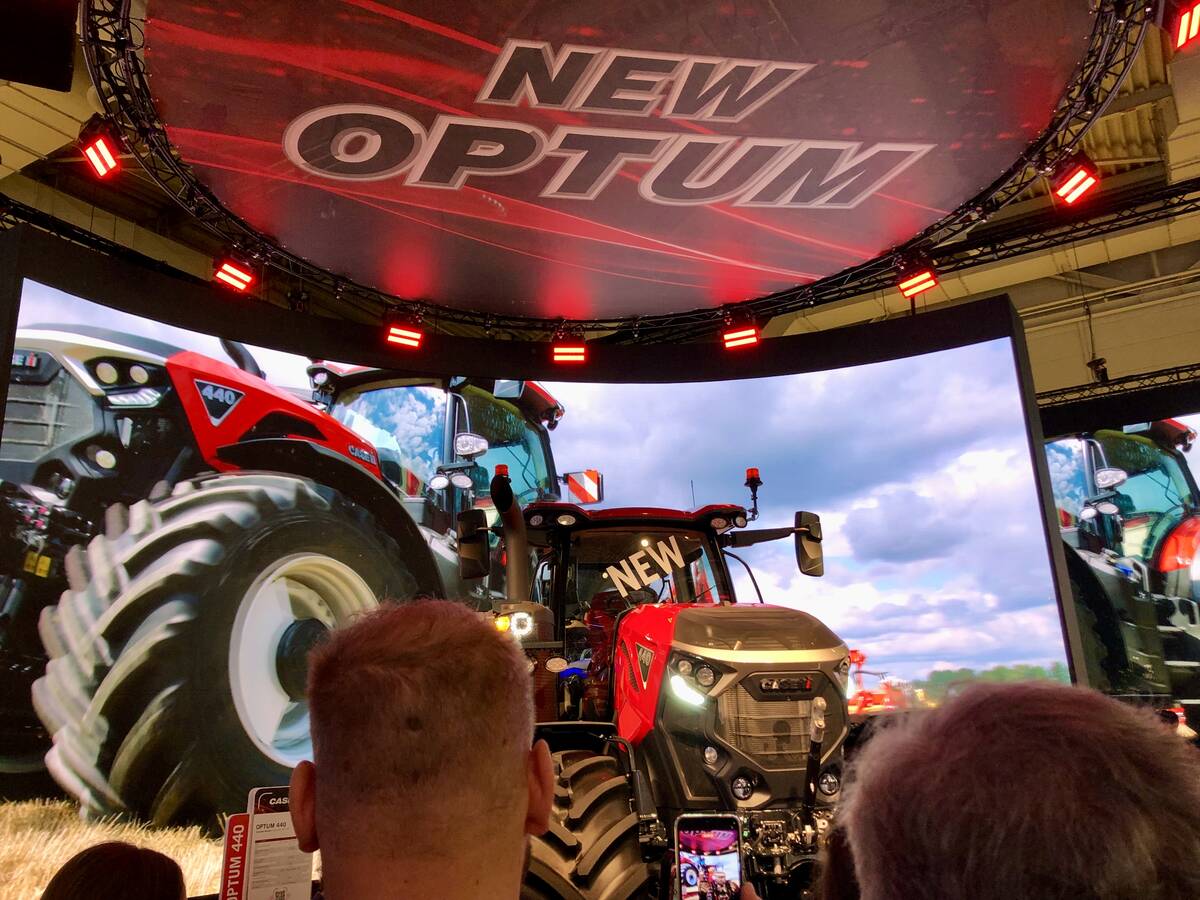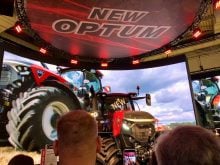The peas were growing within miles of the Western Nutrition Conference, held in Saskatoon last week.
But organizers flew in experts from Spain and France to explain how to best use them in livestock feeds.
“We brought in European speakers to tell Canadian producers how to use our Canadian products,” said Barb Stefanyshyn-Cote, nutritionist for Lumec Farms at Leask, Sask.
“We want to know what they are using and how they are using it so that we can too.”
“It’s good information to have in your back pocket,” she said.
Read Also

VIDEO: Case IH reveals new Optum tractor at Agritechnica 2025
Case IH reveals its new Optum tractor at Agritechnica 2025.
While Canada produces some of the best feed peas in the world, it doesn’t use the crop for livestock rations. This isn’t because Canadian livestock producers don’t realize peas are good feed, said Stefanyshyn-Cote. It is because the price has been jacked up by European subsidies that make it more attractive to sell peas into the export market rather than domestically.
But in the last 10 years, prairie pea production has quadrupled and has reached the point at which Europe can’t be counted on to suck up everything Canadians can supply.
Canadian livestock producers now need to be sold on peas as a common feed so that pea farmers can build a dependable domestic market, she said.
Producers heard several researchers lay out the promising potential of peas as feed during a symposium sponsored by the Saskatchewan, Alberta and Manitoba pulse growers associations and by the Saskatchewan canola development commission.
French feed researcher Jean Noblet discussed methods used to measure the energy value of feed. The method most Europeans use judges feed by the energy the raw grain holds, minus the energy lost by excreta of the animal who eats it. This method reveals the “net energy” of the feed.
Canadians use a more primitive system, Stefanyshyn-Cote said, that excludes some of these factors. However, if Canadians used the European system, peas would become a more attractive feed, since peas provide more net energy than soybean meal, which is their main competitor.
Gonzalo Mateos, of Ciudad University in Madrid, Spain, said about 80 percent of the peas his country imports to feed pigs come from Canada, but, oddly, Spaniards believe their peas come from Australia.
Bruno Barrier-Guillot, of ITCF Boigneville, France, shared European data on the feeding value of peas for pigs and poultry.
A Canadian research perspective was supplied by University of Saskatchewan researcher Dave Christensen. He said studies show different processing procedures between crushers leave canola meal with markedly different chemical compositions. He also noted that heat treatment of canola can substantially lower the solubility of meal protein, but can also have other chemical effects.















